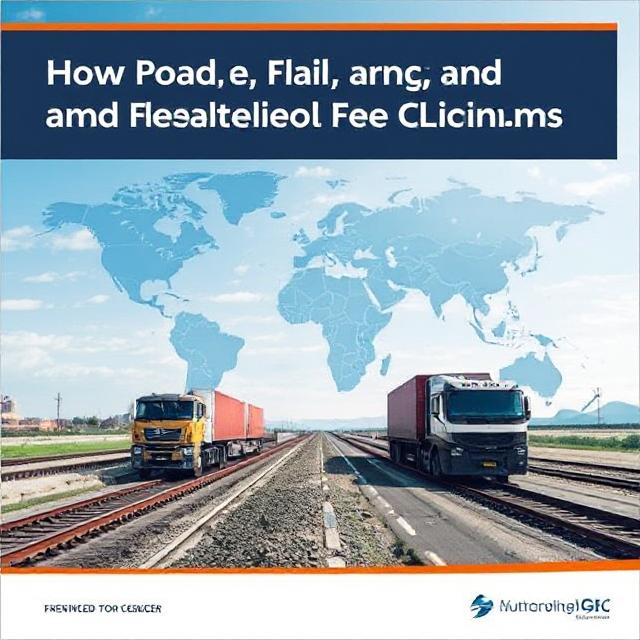Discover how road, rail, air, and sea freight form the foundation of global supply chains, enabling efficient transportation, trade, and delivery across industries worldwide.
How Road, Rail, Air, and Sea Freight Drive Global Supply Chains
Freight transportation is the lifeblood of modern supply chains. Whether it’s raw materials for factories, electronics for retailers, or groceries for homes—road, rail, air, and sea freight keep goods moving efficiently across the globe. Each mode plays a specific role in supporting international trade and logistics operations.
In this blog, we’ll explore how these four freight types contribute to building resilient, efficient, and responsive global supply chains.
🚚 Road Freight: The Last-Mile Workhorse
What It Is:
Road freight involves trucks and vans transporting goods over highways and local roads.
Global Supply Chain Role:
- Handles first-mile and last-mile delivery
- Connects ports, airports, and warehouses
- Supports e-commerce and time-sensitive delivery
Strengths:
- Flexibility in routes and schedules
- Ideal for local and regional distribution
- Faster setup and deployment
Limitations:
- Affected by traffic, fuel prices, and regulations
- Limited capacity for heavy or bulk shipments
🚆 Rail Freight: The Backbone of Bulk Inland Transport
What It Is:
Rail freight uses trains to move cargo across long distances, often between countries or industrial regions.
Global Supply Chain Role:
- Moves heavy goods like coal, grain, and containers inland
- Reduces long-haul trucking costs
- Enhances cross-border logistics
Strengths:
- High capacity and energy efficiency
- More environmentally friendly than road
- Consistent schedules for high-volume transport
Limitations:
- Requires rail infrastructure and terminals
- Needs intermodal solutions for door-to-door delivery
✈️ Air Freight: The Fast Lane for Global Trade
What It Is:
Air freight transports cargo by aircraft and is the fastest form of freight transport.
Global Supply Chain Role:
- Enables urgent and high-value deliveries across borders
- Supports just-in-time manufacturing
- Critical for industries like healthcare and electronics
Strengths:
- Fastest global delivery method
- High reliability and security
- Reaches remote and landlocked locations
Limitations:
- Expensive
- Limited in weight and volume
- Weather-dependent
🚢 Sea Freight: The Giant Mover of Global Trade
What It Is:
Sea freight uses container ships and bulk carriers to transport goods across oceans.
Global Supply Chain Role:
- Handles over 80% of international trade volume
- Moves large and heavy cargo globally
- Cost-effective for bulk and long-distance shipping
Strengths:
- Lowest cost per ton-mile
- Suitable for nearly all cargo types
- Scales easily with demand
Limitations:
- Slower than other modes
- Susceptible to port delays and customs bottlenecks
- Requires intermodal coordination
🌍 Integrated Logistics: How Modes Work Together
Global supply chains don’t rely on one transport type alone—they integrate multiple modes. This intermodal or multimodal approach combines strengths:
- Sea + Rail for efficient cross-continent delivery
- Air + Road for express international shipping
- Rail + Road for regional fulfillment and bulk cargo
Such integration ensures cost-efficiency, timely delivery, and flexibility in supply chain operations.
🧭 Final Thoughts: Freight Modes Power the Global Economy
From trucks on highways to ships at sea, the movement of goods is what keeps the world economy in motion. Understanding how road, rail, air, and sea freight support supply chains helps businesses optimize logistics, reduce costs, and ensure consistent delivery.
In an increasingly connected world, choosing the right freight mode—or combination—is key to staying competitive and responsive in the marketplace.
Target Keywords:
- global supply chains
- freight transportation modes
- road rail air sea freight
- freight logistics
- international shipping
- supply chain logistics
- cargo transportation
- types of freight transport

